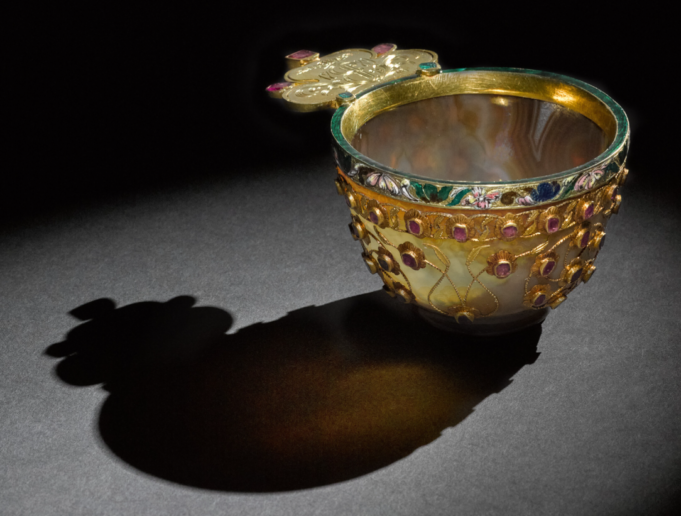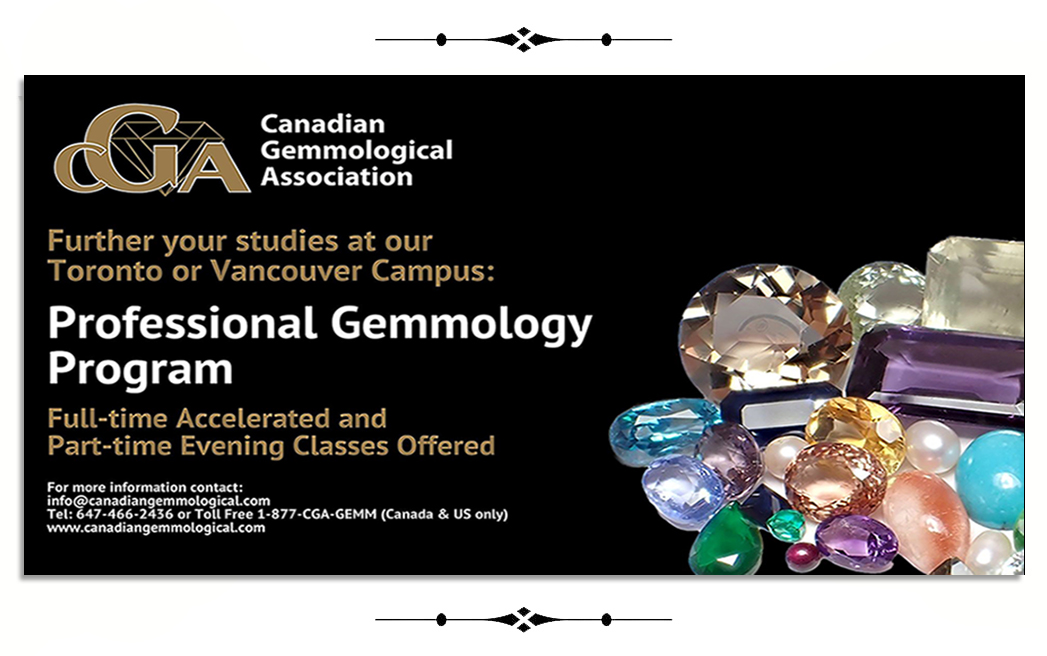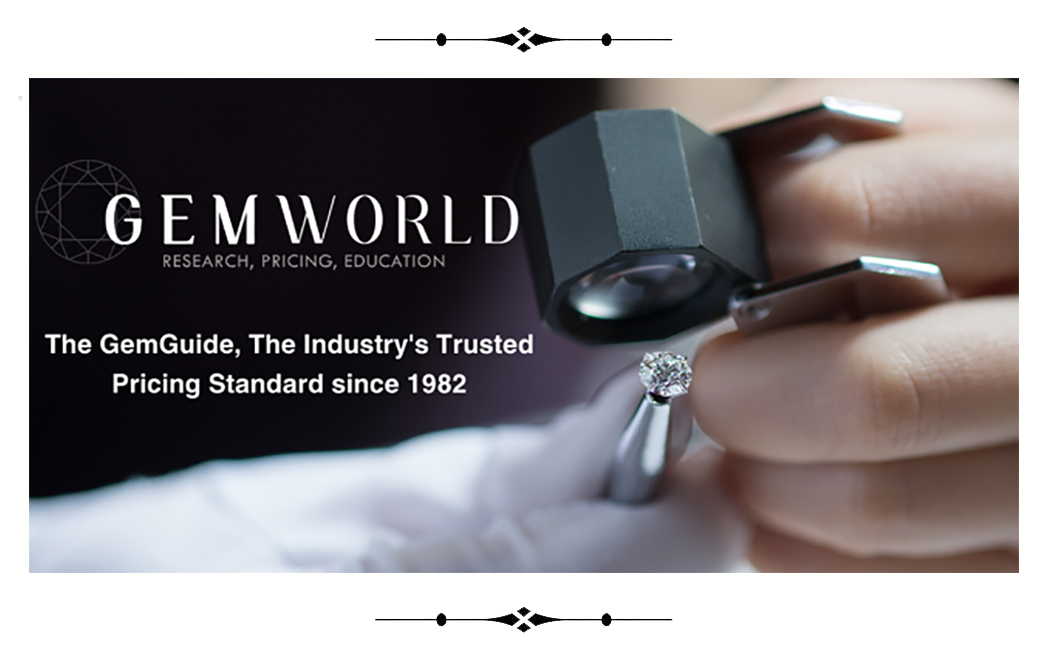The Gems of Sotheby’s Arts of the Islamic World and India
Rare Ottoman artifacts from as far back as the 16th century, went on sale at Sotheby’s London yesterday – April 24.
In the sale were gem set objects, including an early Mughal carved green nephrite jade jar, 16th and 17th century, a diamond-set and enameled gold card case, 19th century, and an agate cup from Sultan Selim III to Catherine the Great, 17th and 18th century.
The London Sotheby’s Spring auction “epitomises the artistic brilliance of Islamic and Indian civilisations” notes Sotheby’s. This is The Belgrave Collection, a selection carefully curated over 40 years with a discerning eye.
The Guennol Lotus Jar:
An important and early Mughal
carved green nephrite jade jar, India, circa 1600
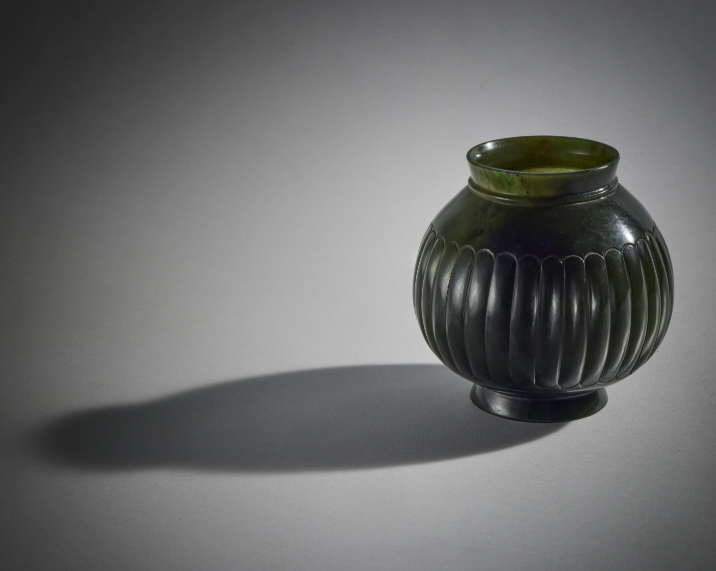
Dark green, of globular form, on a short circular foot, the body with fluted, incised decoration in the form of a lotus, the rim slightly everted. 10cm. height, and 5.3cm. diam. of base
Estimate: 80,000 – 120,000 GBP
Lot Sold: 101,600 GBP
According to Sotheby’s, “Jade has been mentioned in the Islamic world as early as the eighth century and traditionally associated with curing digestive ailments. It is noted in early sources as coming from Khotan in the region along the Silk Road forming present-day Northwest China.
“Jade vessels were considered amongst the most prized possessions of the Mughals.
“This small dark green green jade jar was first attributed to Mughal India by Amy Poster in an article published in 1982. Although it lacks an inscription or a date, the simplicity of its form and elegant decoration places it in the early Mughal period, during the reign of Akbar (1556-1605). It was probably made in the late sixteenth century or very early in the seventeenth century, making it one of the earliest known jade objects from the Mughal era. Very few jade objects survive from the Akbar period.”
A diamond-set and enameled gold card case, India, Rajasthan, Jaipur, 19th century
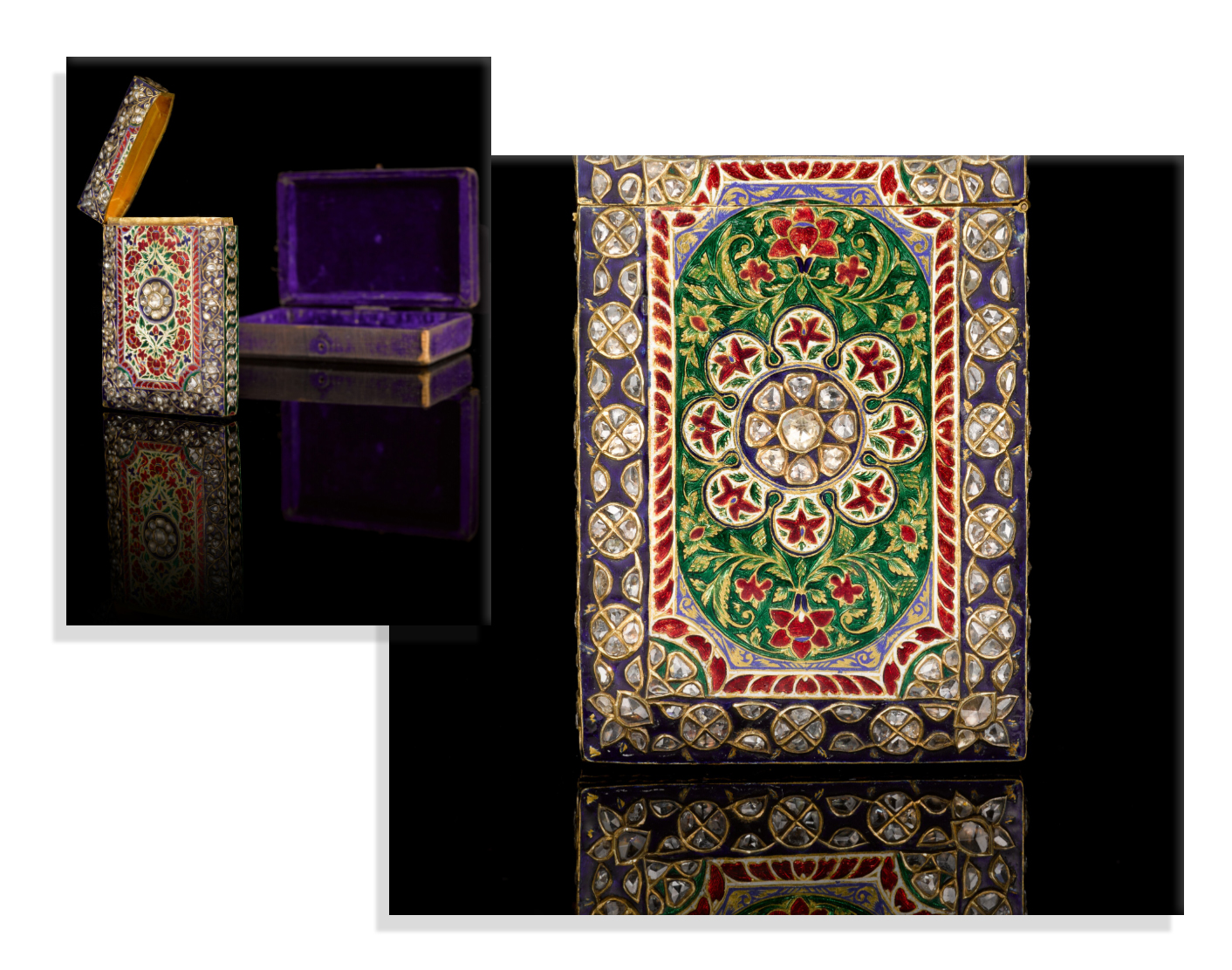
the card case 10 by 6.7cm.; 240.3 grams
7,000 – 10,000 GBP
Lot Sold: 27,940 GBP
An Ottoman agate cup set with rubies and emeralds, Turkey, 17th century, with enameled gold-mount with cipher of Empress Catherine II, dated 1789
Estimate: 80,000 – 120,000 GBP
Lot Sold: 342,900 GBP
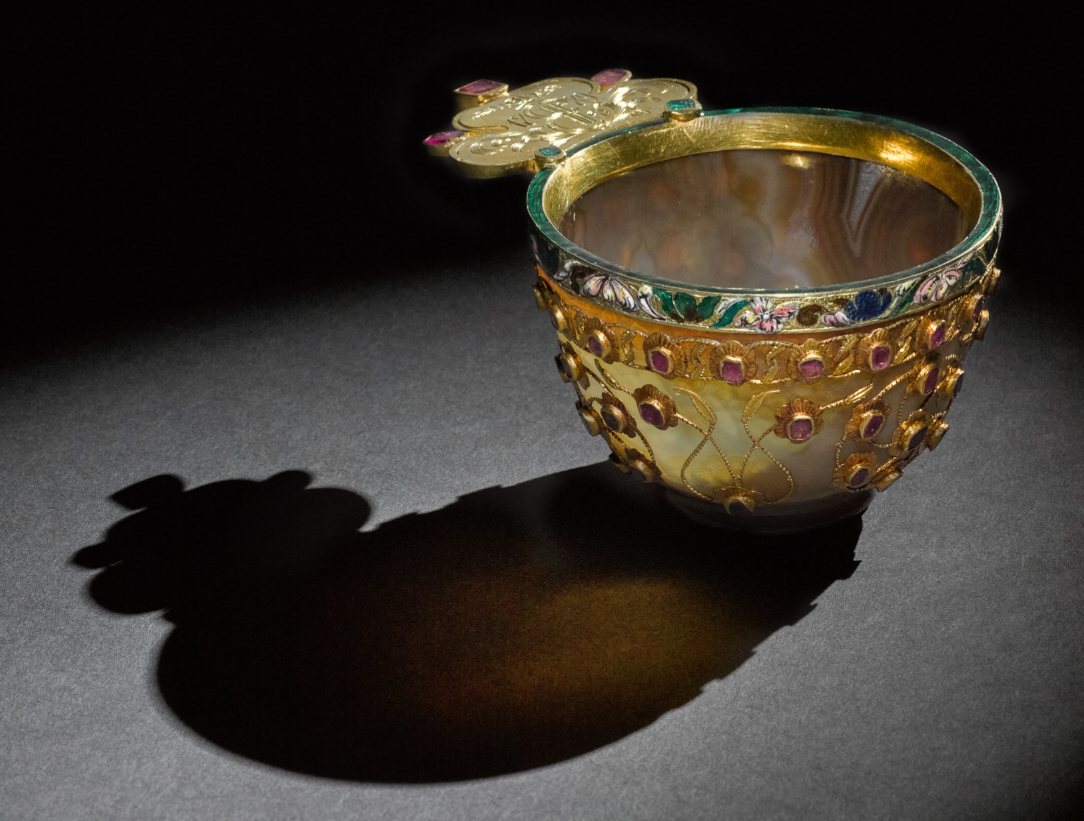
… of deep rounded form on a short slightly splayed foot, the agate body inlaid with gold scrolling vines and flowers set with rubies, the gold rim mount enamelled with scrolling leaves and flowers under a green enamel band, the trefoil-shaped handle engraved with the crowned cypher of Empress Catherine II and the date 1789, set with rubies and emeralds, the underside with a floral enamelled flower and leaves
4.9cm. height
7cm. diam.
10.5cm. width incl. mounts
“The rim mount of the present cup is enameled in a European style and terminated by a trefoil-shaped handle engraved with Catherine the Great’s monogram, dated 1789. It is a later addition, almost certainly of Ottoman manufacture, applied with the aim to turn the cup into a charka, a Russian wine cup.
According to Sotheby’s, “this gem-set agate cup is a splendid illustration of Ottoman craftsmanship at the service of foreign diplomatic relations. The sculpting of precious stones was a technique well-established in Ottoman Turkey and underwent notable advancements during the sixteenth and seventeenth centuries. The embellishment of objects created from nephrite, amber, rock crystal, or lazurite attained remarkable levels of grandeur, characterised by the extensive application of gold inlay and vibrant gemstones arranged in intricate scrolling stems and floral motifs.
“The treasury of the Russian tsars is home to an impressive group of Turkish jewelled artefacts, widely attributed to workshops operating in Istanbul. According to records from Russian archives, the Turkish capital was systematically recognised as both the place where luxury wares were produced and the departure point from which they were dispatched (A. Konstantinovich Leykin 2009, p.11).
Tap here to view the complete list and auction results of the Arts of the Islamic World and India, Sotheby’s London!



